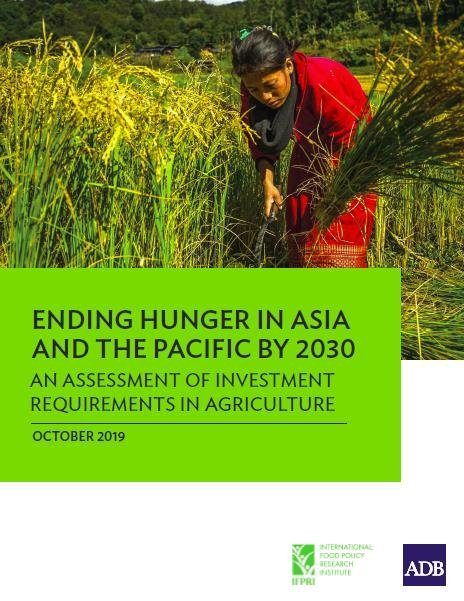- Share this article
- Subscribe to our newsletter
Ending Hunger in Asia and the Pacific by 2030
The report Ending Hunger in Asia and the Pacific by 2030: An Assessment of Investment Requirements in Agriculture aims to assess the potential for agricultural investments and policies to meet current challenges and end hunger in Asia and the Pacific. It was published by the Asian Development Bank (ADB) und the International Food Policy Research Institute (IFPRI) in October 2019.
According to the authors, increased investments in agricultural research and development, irrigation, and rural infrastructure are needed to end hunger in Asia and the Pacific.
The report finds that total annual agricultural investments of USD 78.6 billion are needed to reduce the proportion of hungry people in Asia and the Pacific below 5 per cent of the total population, the threshold for eliminating hunger by 2030 set by the Food and Agriculture Organization (FAO), the International Fund for Agricultural Development (IFAD), and the World Food Programme (WFP).
Meeting this investment level will require an additional USD 36.9 billion annually on top of the projected current level of annual investments of USD 41.7 billion.
Confronting the negative impacts of climate change
The report highlights that investments will need to confront climate-change effects. Climate change is projected to have negative impacts on agriculture up to 2030, reducing yields and production compared to a no-climate change scenario.
These production losses are projected to induce increases in food prices, as well as reduce income and food consumption, particularly for lower income groups. As a result, climate change is projected to slow down reduction in hunger in the Asia Pacific region – with an increase in the number of hungry people by 38 million in 2030 compared to a scenario with no climate change. After 2030 the negative effects of climate change on agriculture become much greater.
Three types of investments
The report analyses three types of investments, including investment in agricultural research and development (R&D), investment to improve water management through expansion in irrigation and increases in basin-level water-use efficiency, and rural infrastructure investments to reduce marketing costs and post-harvest losses to see if they can counteract climate change and reduce hunger more rapidly.
The results show that increased investments in agricultural productivity growth, irrigation and water-use efficiency, and rural infrastructure are highly effective in improving agricultural production, reducing prices, raising incomes, and reducing hunger. Agricultural R&D and rural infrastructure have particularly large impacts on reducing hunger.
(IFPRI/ile)
Read more at IFPRI-Website: http://www.ifpri.org/news-release/report-increased-investments-key-ending-hunger-asia-pacific-region
Download the report at ADB-Website: https://www.adb.org/publications/investment-agriculture-food-security-asia-pacific-2030





Add a comment
Be the First to Comment